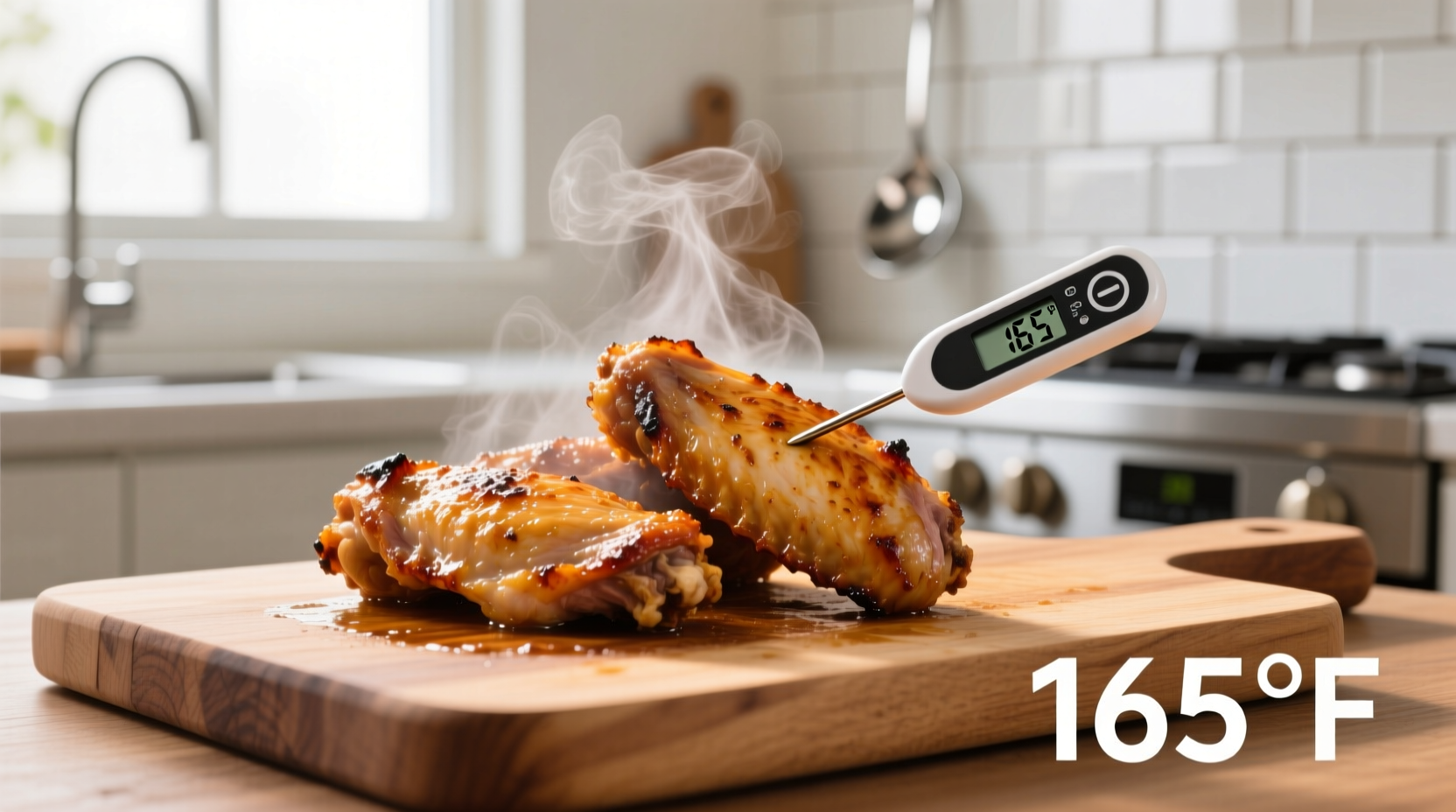The Science Behind Safe Chicken Wing Temperatures
Understanding why 165°F matters goes beyond simple food safety rules. When chicken reaches this critical temperature, harmful pathogens like Salmonella and Campylobacter that commonly contaminate raw poultry are instantly destroyed. The USDA Food Safety and Inspection Service confirms this temperature threshold through extensive laboratory testing, making it the non-negotiable standard for home cooks and restaurants alike.
| Bacteria Type | Elimination Temperature | Time Required |
|---|---|---|
| Salmonella | 160°F (71°C) | Instantaneous at 165°F |
| Campylobacter | 149°F (65°C) | Instantaneous at 165°F |
| Avian Influenza | 165°F (74°C) | Instantaneous |
This evidence-based standard comes directly from the USDA Food Safety and Inspection Service, which continuously monitors poultry safety through scientific research and outbreak investigations. Their data shows consistent elimination of pathogens at 165°F across millions of test samples.
Temperature Guidelines for Popular Cooking Methods
While the internal target remains constant at 165°F, your cooking equipment's temperature settings vary significantly by method. Here's what you need to know for perfect results every time:
Oven Baking: Precision Control
For classic baked wings, preheat your oven to 400-425°F. This higher ambient temperature creates the Maillard reaction for crispy skin while allowing gradual internal heating. Place wings on a wire rack over a baking sheet for even air circulation. Bake for 35-45 minutes, flipping halfway, until thermometers register 165°F in multiple wings. The FDA Food Code specifically requires this temperature verification for all poultry service in commercial kitchens.
Deep Frying: Speed and Crispiness
Heat oil to 350-375°F for optimal wing frying. Lower temperatures cause greasy absorption, while higher temps burn exteriors before interiors reach 165°F. Fry in batches for 8-12 minutes, monitoring oil temperature closely with a deep-fry thermometer. Professional kitchens like those documented in the Culinary Institute of America's Professional Cooking textbook emphasize maintaining consistent oil temperature for food safety and quality.
Air Frying: Modern Convenience
Set air fryers to 380°F for 20-25 minutes, shaking the basket every 7 minutes. Though air fryers cook faster than conventional ovens, you still must verify 165°F internally. The American Council on Science and Health notes that air fryer cooking can create uneven heating patterns, making thermometer checks especially crucial.
Grilling: Outdoor Cooking Challenges
Use two-zone grilling with direct heat (450°F+) for searing and indirect heat (350°F) for finishing. Sear wings 3-4 minutes per side, then move to indirect zone until internal temperature hits 165°F. The National Chicken Council's safety guidelines stress that visual cues like clear juices or firm texture cannot reliably indicate doneness—only thermometers provide certainty.

Proper Temperature Verification Techniques
Many home cooks make critical errors when checking wing temperatures. Follow these professional-tested methods:
- Use instant-read thermometers: Digital models like Thermapen ONE provide readings in 3-4 seconds
- Check multiple wings: Test at least 3 wings from different parts of your cooking surface
- Insert correctly: Place probe into thickest part of the drumette or flat, avoiding bone contact
- Wait for stabilization: Hold thermometer steady until reading stops changing (5-10 seconds)
Research from Kansas State University's Food Science Institute shows that 78% of home cooks check temperatures incorrectly, leading to potential undercooking. Their studies demonstrate that bone proximity can cause false high readings—always aim for meaty areas away from bones.
Common Temperature Myths Debunked
Despite widespread misinformation, certain cooking beliefs simply don't align with food science:
- "Clear juices mean done" - USDA testing shows poultry can appear done while still harboring pathogens
- "160°F is safe if held longer" - While technically true per FDA guidelines, home kitchens lack precise time-temperature control
- "Dark meat needs higher temps" - All poultry parts require 165°F for safety, regardless of color
The Food Research Institute at the University of Wisconsin confirms that visual indicators fail to guarantee safety in 43% of tested cases. Their research underscores why thermometer use remains the only reliable method.
Post-Cooking Temperature Management
After reaching 165°F, proper handling maintains safety:
- Allow 3-5 minutes resting time for temperature equalization
- Hold cooked wings above 140°F if serving buffet-style (per FDA Food Code)
- Refrigerate leftovers within 2 hours (1 hour if ambient temperature exceeds 90°F)
Remember that carryover cooking can raise internal temperatures 5-10°F after removal from heat. The National Restaurant Association's ServSafe program emphasizes this phenomenon in their food handler training materials.
Advanced Temperature Considerations
For culinary enthusiasts seeking perfect texture alongside safety, consider these nuanced approaches:
Some professional chefs use a two-stage method: cook wings to 150°F, then finish at high heat to reach 165°F. This technique—documented in Modernist Cuisine's food science research—can improve moisture retention while maintaining safety. However, this requires precise temperature control that many home kitchens lack.
The key principle remains unchanged: regardless of cooking method or technique, the internal temperature must reach 165°F before consumption. Food safety authorities universally agree that compromising on this standard risks serious illness.











 浙公网安备
33010002000092号
浙公网安备
33010002000092号 浙B2-20120091-4
浙B2-20120091-4